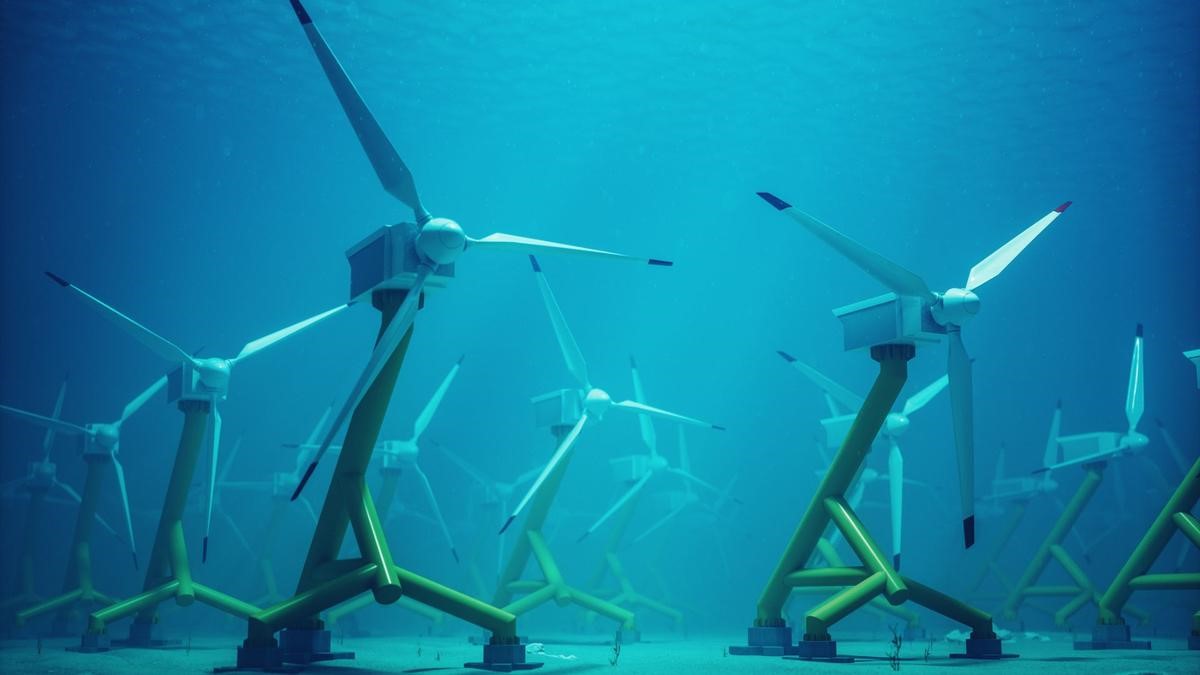Ocean Currents Capable of Producing 2.5 Times More Energy Than Wind Farms Have Been Discovered
By analyzing 43 million data points collected over three decades, researchers identified ocean regions with the highest power generation potential.After analyzing three decades of ocean current data, researchers at Florida Atlantic University (FAU) have identified prime locations for renewable energy generation. According to a research publication, Florida’s east coast is among the sites capable of producing over 2,500 watts of power per square meter.
As the world transitions away from fossil fuels, the demand for clean energy sources is growing. While wind and solar power are being rapidly deployed, their efficiency is hindered by intermittency—where energy production halts due to a lack of wind or sunlight for extended periods.

Figure 1.Underwater Turbines That Can Tap into Ocean Currents.
In contrast, ocean currents are nearly constant, offering the potential for uninterrupted power generation if harnessed effectively. Interesting Engineering has previously highlighted various innovative approaches being developed to tap into this renewable resource [1]. However, even with advancing technology, determining the optimal deployment locations remains crucial.Figure 1.underwater turbines that can tap into ocean currents.
Three Decades of Data
Researchers analyzed 43 million data points from NOAA’s Global Drifter Program, which tracked ocean currents using 1,250 satellite-monitored buoys from 1988 to 2021. Their study, covering Southeast Asia, South Africa, Brazil, French Guiana, and the U.S. Southeast, identified South Africa and Florida’s east coast as the most promising sites, with power densities reaching 2,500 watts per square meter—2.5 times higher than top wind energy resources.
Ocean Currents: A Vast Renewable Resource
Beyond Florida and South Africa, high-power density areas (over 2,000 watts per square meter) were found along the U.S. East Coast up to North Carolina and parts of Africa’s eastern and western coasts, including Somalia, Tanzania, Kenya, Madagascar, and South Africa [2]. Researchers mapped around 190,000 square miles (490,000 sq. km) of ocean with power densities between 500 and 1,000 watts per square meter.
The study also noted seasonal variations, with shallower waters generating more power in summer. Key factors influencing energy potential include current speed, water depth, and proximity to shore. However, challenges such as marine life interactions, biofouling, and electromagnetic interference from cables remain unaddressed.
References
- https://techxplore.com/news/2025-03-ocean-energy-production-worldwide-revealed.html
- https://interestingengineering.com/energy/ocean-currents-more-power-wind-farms
Cite this article:
Keerthana S (2025), Ocean Currents Capable of Producing 2.5 Times More Energy Than Wind Farms Have Been Discovered, AnaTechMaz, pp. 150















